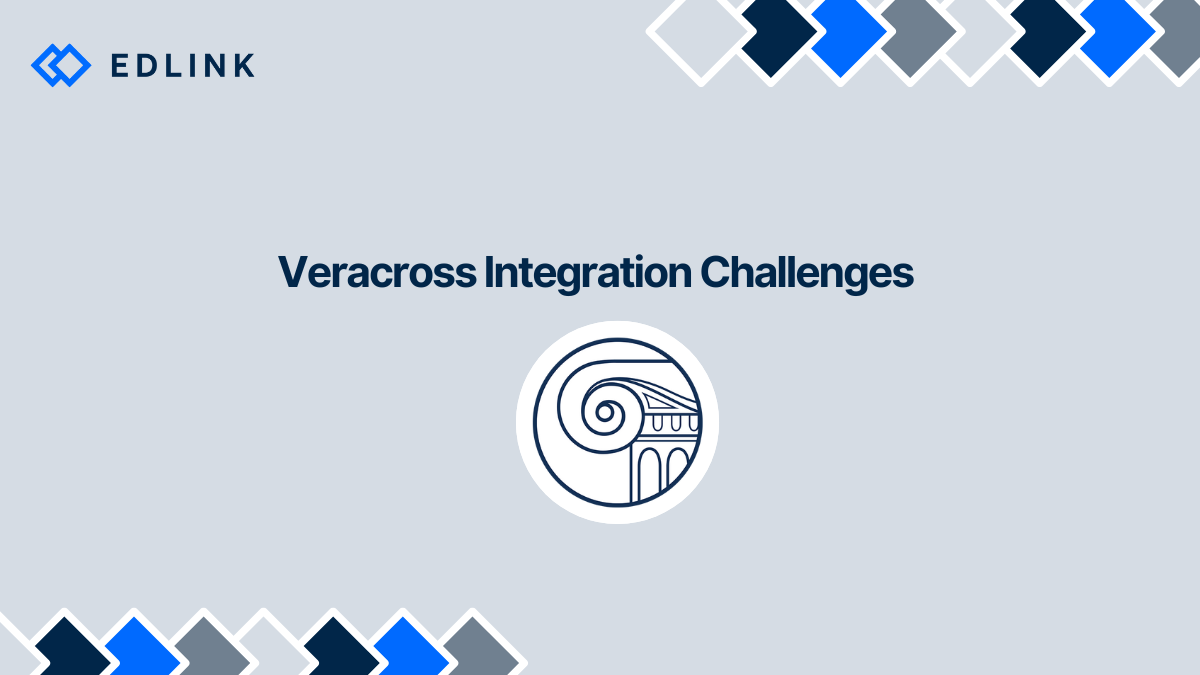SIS Integrations and Interoperability
Interoperability is the ability of software systems to share data between each other. In this context, interoperability refers to edtech products (learning apps, platforms, content, etc.) and their ability to connect with learning institution data systems (like an SIS). When interoperable, the two systems can:
- Provision accounts automatically and ahead of the school year (known as “rostering”)
- Automatically share learning outcomes to a learning institution’s gradebook
- Retrieve attendance data for analysis
- … and more!
Given the large number of edtech products used nowadays, learning institutions need edtech products that are both (1) interoperable and (2) seamlessly share data. Being able to do these two things makes an edtech product more marketable and “sticky” (read: hard to let go of) for learning institutions of all types. This results in happier customers (like school admins, educators, and students) and higher renewal rates.
Interoperability allows educators to have a more complete view of a student’s learning journey. This perspective supports better-tailored instruction to meet individual needs. The goal of interoperability with SISs is to use data to deliver a more effective, personalized, and seamless learning experience.
A Veracross Integration
Veracross is a SaaS-web-based SIS with a single-record database and personalized communication tools. The Veracross API uses measures like OAuth, HTTP, and JSON. Other tools and libraries that support these measures are relevant for edtech developers to know. Developers can choose endpoints from the Authorization API or the Data API based on the data needed.
The Authorization API: Third-party vendors can use this API to enable single sign-on (SSO) integrations. To build an SSO integration, developers must have a pre-approved OAuth application. Each OAuth Application has up to 300 requests every 3 minutes from the first request. Then, every 3 minutes, the limit will reset. When the rate limit is exceeded, expect to get an HTTP 429 "Too Many Requests" response.
The Data API: Third-party vendors can use this API to enable integration features like rostering, grade passback, analytics, and attendance. Each request is subject to rate limiting, too. The basis of the limit is the OAuth Application record used to create access tokens. All access tokens from the same app share the same rate-limiting quota.
It appears that third parties can integrate with Veracross using the API or OneRoster. Since 1EdTech manages OneRoster, be aware that different versions might impact implementation.
Veracross Integration Challenges
Any integration will come with its own unique set of struggles. For edtech developers looking to integrate with Veracross, here are three issues you can expect to face:
- Data Mapping and Synchronization
- Authentication, Authorization, and Security
- API vs. OneRoster Integrations
Data Mapping and Synchronization: These are vital for ensuring the accuracy and reliability of SIS integrations. Developers need to carefully plan these processes to integrate successfully. Challenges include:
- Different Data Models: Different systems often have different data models, storing data differently. This can make mapping data from one system to another challenging.
- Missing or Inconsistent Data: Though Veracross hosts a very complete data model, sometimes the data in one learning institution’s system may be missing or inconsistent and change from institution to institution. Without consistent, correct data from a learning institution, it's nearly impossible to fill in or correct this data after syncing.
- Change Management: As systems evolve, the data models and data may also change. Keeping the data mappings and synchronization processes up-to-date is an ongoing challenge.
Authentication, Authorization, and Security: Veracross’s Authorization API integrates authentication, authorization, and security into its usage. The SSO flow is established using the OAuth protocol – a secure method to deliver authorization. The challenge for developers is to correctly implement OAuth into their app. Best practices include exploring OAuth, two-factor authentication, and SSL/TLS encryption. Each security method will need some SIS configuration from the learning institution. More security layers should depend on factors like the ideal user experience (read: staff experience).
API and OneRoster Integrations: These can lead to two very different integration experiences for developers. Both are relevant since both appear within school data system integrations. 1EdTech created OneRoster, and Veracross uses it to connect to LMS providers. The trade-off with using OneRoster is less flexibility for more organization and familiarity. The opposite is true for APIs. Both API and OneRoster integrations can be equally secure, but their implementation matters.
In The End...
A Veracross integration will deliver more interoperability for learning institutions. However, choosing to take on a Veracross integration will come with challenges. Developers can expect different data models, missing or inconsistent data, and change management issues. A developer should consider their ability to implement security measures like OAuth. Finally, developers should weigh their options before choosing an API or OneRoster integration.
Learn More about Integrations
If you’re interested to learn more about Integrations here’re other articles we’ve written:
- Building or Buying Your LMS Integrations
- What is an SIS Integration?
- SIS Integration Challenges
- The Benefits of Integrating Your App with an LMS
Want to Learn More about Edlink?
If you're looking for a partner who can help guide you through developing LMS integrations (like these), then let’s introduce ourselves. We’re Edlink!

